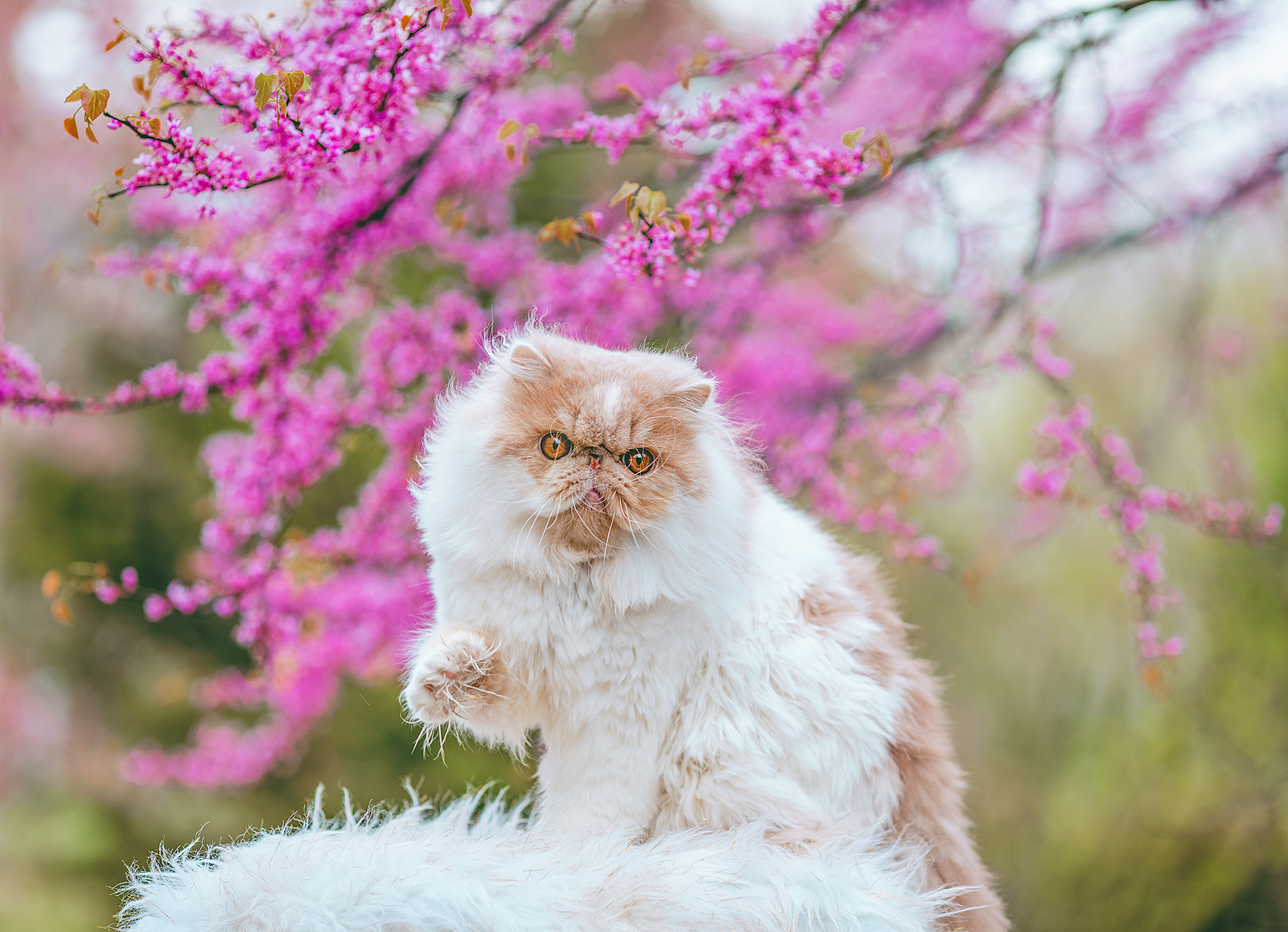Persian cats, due to their flat faces, are prone to several specific types of eye infections and other eye-related issues. This comprehensive guide covers the common eye problems associated with Persian cats, including their causes, symptoms, diagnosis, treatment options, and some natural remedies for prevention and management.
What are the Common Eye Problems in Persian Cats?

1. What is Epiphora in Persian Cats?
Epiphora is a condition that occurs when the nasolacrimal duct does not function properly, preventing tears from draining normally. This leads to tears streaming onto the face, creating a moist environment that can foster bacterial, fungal, or viral infections.
Symptoms:
– Red and inflamed eyes
– Discolored discharge
– Skin irritation around the eyes
Diagnosis: Veterinary examination to determine the specific cause of the infection.
Treatment: Medication prescribed by a vet to address the underlying infection. Regular cleaning of the face and eyes to reduce moisture and prevent further irritation.
Natural Remedies:
– Use a damp cloth to gently clean the face, especially around the eyes, to reduce staining and prevent infection.
– Apply a small amount of coconut oil or aloe vera gel to the affected area to soothe and reduce inflammation.
2. What is Exophthalmos in Persian Cats?
Exophthalmos is a condition characterized by the eyeball protruding from the socket, increasing the risk of corneal ulcers and corneal sequestra.
Symptoms:
– Protruding eyeballs
– Corneal ulcers
– Corneal sequestra
Diagnosis: Veterinary examination to assess the extent of the condition.
Treatment: May require surgical intervention to correct the position of the eyeball and treat any secondary conditions like corneal ulcers.
Natural Remedies: There are no specific natural remedies for this condition, but keeping the eyes clean and applying soothing agents like aloe vera can help manage discomfort.
3. What is Ankyloblepharon in Persian Cats?
Ankyloblepharon is a congenital abnormality where the upper and lower eyelids are partially or completely fused, leading to tear accumulation and potential cyst formation.
Symptoms:
– Accumulation of tears
– Potential cysts
– Vision obstruction
Diagnosis: Veterinary examination to confirm the extent of the fusion.
Treatment: Surgery may be necessary to correct the fusion and restore normal vision.
Natural Remedies: No specific natural remedies, but regular cleaning and application of soothing agents can help manage symptoms.
4. What is Entropion in Persian Cats?
Entropion is a condition where the eyelids and eyelashes turn inward, irritating the cornea and leading to excessive tearing, inflammation, and infections.
Symptoms:
– Narrowed eyes
– Corneal vascularization
– Ulcerations
Diagnosis: Veterinary examination to confirm the inversion of the eyelid edge.
Treatment: Surgical treatment is often necessary to correct the eyelid position.
Natural Remedies: Applying coconut oil or aloe vera gel to soothe the eyes and reduce inflammation can help manage symptoms until veterinary treatment is sought.
5. What is Primary Glaucoma in Persian Cats?
Primary Glaucoma is a rare condition that results from anatomical abnormalities affecting the drainage apparatus of the eye, leading to fluid buildup and increased pressure.
Symptoms:
– Blurred vision
– Eye discomfort
– Discharge
– Corneal edema
– Dilated pupils
– Enlarged eyeballs
Diagnosis: Veterinary examination, including ocular pressure testing.
Treatment: Medicinal drops or surgery depending on the severity.
Natural Remedies: No specific natural remedies, but keeping the eyes clean and applying soothing agents can help manage discomfort.
How to Manage and Treat Eye Infections in Persian Cats?

- Regular Cleaning:
- Use a damp cloth to gently clean the face, especially around the eyes, to reduce staining and prevent infection.
-
Dampen a cotton ball with water and wipe away discharge from the inner corner of the eye outward. Use a clean ball for each eye.
-
Veterinary Consultation:
- If symptoms persist or worsen, consult a veterinarian for proper diagnosis and treatment.
-
Follow the prescribed treatment plan, which may include antibiotics, anti-viral medications, or other topical treatments.
-
Medications:
- Topical treatments like Terramycin or Vetropolycin may be prescribed for bacterial infections.
- Anti-viral medications may be necessary for viral infections like FHV-1.
-
Corticosteroid drops or ointments can be used to reduce inflammation.
-
Natural Remedies:
- Coconut Oil: Apply a small amount to the affected area to soothe and reduce inflammation.
- Aloe Vera Gel: Apply a small amount to the affected area to soothe and reduce inflammation.
- Warm Compresses: Apply a warm compress to the eyes to help loosen discharge and reduce swelling.
Potential Costs for Treating Persian Cat Eye Infections
The costs involved in managing and treating eye infections in Persian cats can vary widely depending on the severity of the condition and the required treatment. Here are some general estimates:
| Cost Item | Estimated Range |
|---|---|
| Veterinary Consultation | $50 – $200 |
| Diagnostic Tests | $50 – $500 |
| Medications | $10 – $100 per treatment course |
| Surgical Procedures | $500 – $2,000 or more |
References
- Think Your Cat Has An Eye Infection? 5 Possible Causes – Pumpkin Care Blog
- All you need to know about Persian cat eyes – Untamed
- Types Of Cat Eye Discharge And What They Mean – Cloud 9 Vets
